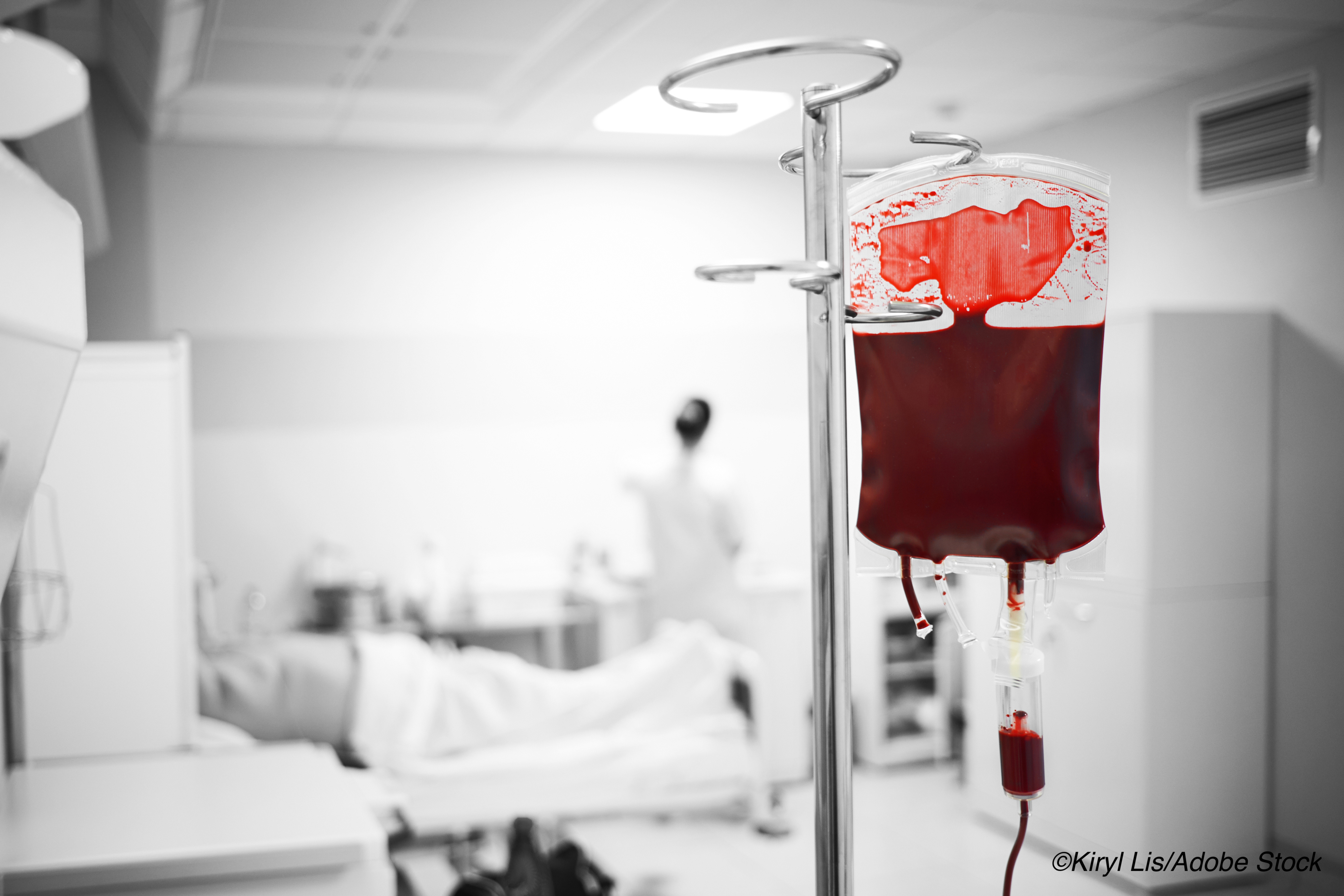
Allogeneic hematopoietic stem cell transplant (HSCT) may be more effective than autologous HSCT for patients with relapsed or refractory peripheral T-cell lymphoma (PTCL), but, it was also associated with a higher incidence of transplantation-related mortality (TRM), according to results published in JAMA Network Open.
Treatment of patients with relapsed/refractory PTCL is challenging, and clinical outcomes are poor, according to researchers led by Jun Du, MD, of the Chinese Academy of Medical Sciences and Peking Union Medical College, Tianjin, People’s Republic of China.
“Given the extremely poor results of current treatments, many researchers have pursued exploratory strategies. Although molecular targeted drugs, such as brentuximab vedotin, provide objective hope for CD30+ PTCL, hematopoietic stem cell transplant (HSCT) continues to be a reasonable option. Currently, the concept of high-dose chemotherapy followed by autologous HSCT during first remission in patients with PTCL has been widely accepted by clinical practitioners. However, the roles of autologous HSCT and allogeneic HSCT in R/R-PTCL remain far more controversial. Although HSCT has certain beneficial effects, adverse events (AEs) will negatively influence survival as well. Therefore, this meta-analysis was performed to compare the efficacy and safety of autologous HSCT vs allogeneic HSCT in R/R-PTCL,” they wrote.
Du and colleagues conducted this systematic review and meta-analysis of 30 trials that included 1,765 patients, 880 of whom underwent allogeneic HSCT and 885 of whom underwent autologous HSCT.
In all, 16 trials assessed three-year overall survival (OS), which was 50% in patients undergoing allogeneic HSCT, compared with 55% in patients who underwent autologous HSCT. Three-year progression-free survival (PFS) was 42% versus 41%, respectively; and three-year TRM was 32% versus 7%.
Five-year OS was assessed in 520 patients enrolled in 11 studies, and those treated with allogeneic HSCT had a combined five-year OS of 54%, compared with 53% in patients treated with autologous HSCT. These results, noted Du et al, suggest that “the effectiveness of allogeneic HSCT was not different.”
Researchers combined PFS, event-free survival (EFS), and disease-free survival (DFS) into one measure of PFS. In the 11 studies that reported PFS, patients undergoing allogeneic HSCT had a combined PFS of 42% at three years and 48% at five years. PFS for patients treated with autologous HSCT was reported in 15 studies, with a combined PFS of 41% at three years, and 40% at five years.
“Confounding bias still existed in the five-year outcome in the allogeneic HSCT group; therefore, we could compare the therapy efficiency based only on three-year PFS, which was 42% (95% CI, 35%-51%) for the allogeneic HSCT group and 41% (95% CI, 33%-51%) for the autologous HSCT group, indicating they were approximately equivalent to each other in terms of the PFS at three years,” noted Du and colleagues.
For TRM, they again used combined data (TRM and non-relapse mortality [NRM]). These results merited special mention in an accompanying editorial, by Joseph C. Alvarnas, MD, of the City of Hope National Medical Center, Duarte, California, and fellow authors:
“The most striking outcome difference between the two transplantation modalities was in the risk of three-year TRM, 7% (95% CI, 2%-23%) and 32% (95% CI, 27%-37%) for autologous HSCT and allogeneic HSCT, respectively. The authors noted that much of the long-term additional risk of allogeneic HSCT was primarily associated with the development of graft-vs-host disease (GVHD) in that population,” they wrote.
Alvarnas and co-authors offered several caveats to these findings, including the need to consider that autologous HSCT is more commonly used in patients in remission, and allogeneic HSCT in patients with relapsed, persistent, or refractory PTCL. Therefore, they stressed, “There are no insights that are generalizable from this study that would lead clinicians to alter their current patient selection paradigms or to clearly demonstrate which approach is globally preferable.”
In addition, they urged caution in interpreting these findings due to the “marked diversity of histological subtypes” among PTCL patients. Clinical factors such as previous treatments and patient responses to such, preexisting comorbidities, and patient fitness must all be considered in the choice of autologous or allogeneic HSCT.
“The data from this meta-analysis provide evidence that for select patients with PTCL, both autologous HSCT and allogeneic HSCT may be a potentially effective approach to treatment. This meta-analysis falls short of providing a rigorous, risk-segmented analysis of which modality is more likely to be most effective for a particular patient. As such, it does not provide a Rosetta Stone for unlocking the secrets of how best to manage this complex, highly clinically diverse set of patients. Despite the incremental insights achieved through this analysis, there is still far to go in identifying the optimal approach for an individual patient with PTCL,” concluded Alvarnas et al.
Study limitations include the inclusion of primarily single-arm trials, not enough data for subgroup analysis, and widely varied patient characteristics (including age, histologic findings, and treatment characteristics).
-
Allogeneic hematopoietic stem cell transplant (HSCT) may have better effectiveness but be less safe than autologous HSCT for patients with refractory or relapsed peripheral T-cell lymphoma, according to results of a recent systematic review and meta-analysis.
-
Overall survival and progression-free survival were similar in the two groups, but allogeneic HSCT was also associated with a higher incidence of transplantation-related mortality.
Liz Meszaros, Deputy Managing Editor, BreakingMED™
This study was funded by a grant from the Central Subordinate University Basic Scientific Research Foundation of China to Du.
Alvarnas reported no conflicts of interest.
Cat ID: 467
Topic ID: 78,467,730,467,192,925


